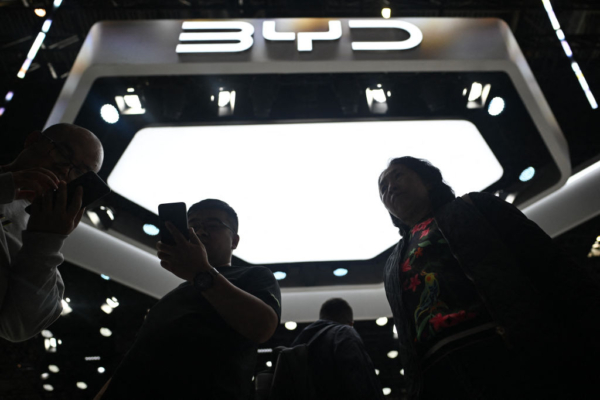China’s electric vehicle manufacturer BYD has recently encountered a bottleneck in its operations. Since May of this year, BYD’s domestic sales in China have significantly declined, despite growth in overseas markets, which has failed to offset the weak sales volume at home.
According to Bloomberg, from May to August this year, BYD’s deliveries in China dropped by about 10% compared to the same period last year, abruptly halting its streak of continuous growth. The company’s financial report for August revealed a 30% quarterly decline in net profit, and its stock price plummeted by 8%, causing a market value loss of over $6 billion in a single day. BYD’s Hong Kong-listed stocks have fallen approximately 30% from their peak four months ago, wiping out around $45 billion in total market value during this period.
Reuters reported that BYD has revised its 2025 sales target from the initial 5.5 million vehicles down to about 4.6 million, although the company has not confirmed this information.
Experts attribute BYD’s sales slump to the Chinese authorities’ intensified regulation on price wars. At the end of 2022, Beijing began reducing subsidies for new energy vehicles, resulting in reduced vehicle prices without government assistance, thus increasing purchasing costs for consumers. To maintain sales and market share, many automakers started cutting prices, leading to a significant price reduction trend in the new energy vehicle manufacturing sector in early 2023.
At that time, BYD rapidly gained market share with a low-price strategy. However, as the Chinese government restricted the extent of price reductions, this advantage was weakened. Additionally, regulatory agencies required car manufacturers to pay suppliers within 60 days, significantly shorter than BYD’s average payment period of 275 days in 2023, putting pressure on the company’s financial chain.
Despite these challenges, BYD’s sales in Europe and Latin America continue to grow, bringing relatively higher profits. However, governments in various European and American regions are considering restricting the import of Chinese electric vehicles, casting a shadow over BYD’s export expansion strategy.
In the intensely competitive domestic electric vehicle industry in China, BYD’s sales growth is slowing down. Some regions are experiencing overcapacity and oversupply, combined with delays in the launch of some new models, causing investors to increasingly worry about BYD’s ability to cope with competition.
Many analysts have recently turned cautious or negative in their investment ratings for BYD, with many analysts recommending selling BYD. The sell rating for BYD has reached its highest level since 2022.
Founded in 1995, BYD initially produced mobile phone batteries and expanded into the automotive industry in 2003. After recruiting an international team of automotive designers in 2016, the brand underwent a complete transformation and with substantial subsidies from the Beijing government, became a leader in China’s new energy vehicle market.
However, this success story, transitioning from battery production to complete vehicles, is currently facing its most severe challenge. How BYD continues to operate in an environment of tightening Chinese government policies and intensified competition will be a focal point for observing the future global electric vehicle market.

